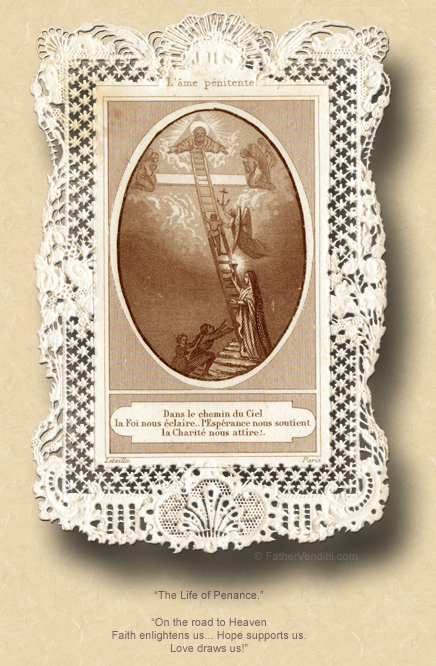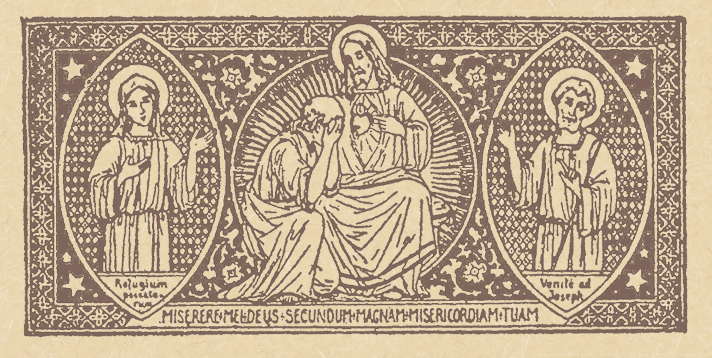Mirror, Mirror on the Wall, Who’s the Fairest One of All?
The Twenty-First Monday of Ordinary Time.
Lessons from the primary feria, according to the ordinary form of the Roman Rite:
• I Thessalonians 1: 1-5, 8-10.
• Psalm 149: 1-6, 9.
• Matthew 23: 13-22.
The Eleventh Monday after Pentecost; and, the Commemoration of Saint Zephyrinus, Pope & Martyr.*
Lessons from the dominica,** according to the extraordinary form of the Roman Rite:
• I Corinthians 15: 1-10.
• Psalm 27: 7.
• Mark 7: 31-37.
|
If a Mass for the commenoration is taken, lessons from the common "Si díligis me…" for One or Several Popes:
• I Peter 5: 1-4, 10-11.
• Psalm 106: 32, 31.
• Matthew 16: 13-19.
|
FatherVenditti.com
|
 6:52 AM 8/26/2019 — There’s a certain touch of irony in today’s Gospel lesson, given the current crisis in the Church. When our Lord rails against the hypocrisy of the Scribes and Pharisees, how can we not think of the hypocrisy of some of our own Church leaders. 6:52 AM 8/26/2019 — There’s a certain touch of irony in today’s Gospel lesson, given the current crisis in the Church. When our Lord rails against the hypocrisy of the Scribes and Pharisees, how can we not think of the hypocrisy of some of our own Church leaders.
Our Lord labels the scribes and Pharisees hypocrites for doing what the Church would like to avoid doing: practicing their faith for show rather than in reality. Today’s Gospel lesson is the prologue; I won’t be with you tomorrow, but the imagery He will use in tomorrow’s lesson is quite striking, as you will hear for yourselves. And then on Wednesday, another day I won’t be here, is when you will hear Him really drop the bomb on them, and say, “Woe upon you, scribes and Pharisees, you hypocrites that are like whitened sepulchers…” (Matt. 23: 27 Knox). What’s a sepulcher? It’s where you put dead people. They’re all white and clean on the outside, but what’s inside?
Tomorrow is the feast of Saint Monica and Wednesday is the feast of Saint Augustine; and, even though the Missal advises against it, a lot of priests like to use the optional lessons for the saint and bypass the readings for the day, so listen to the whole passage:
Woe upon you, scribes and Pharisees, you hypocrites that are like whitened sepulchres, fair in outward show, when they are full of dead men’s bones and all manner of corruption within; you too seem exact over your duties, outwardly, to men’s eyes, while there is nothing within but hypocrisy and iniquity (vs. 27-28 Knox).
That’s a pretty stinging rebuke, especially when you consider that, inside a tomb where bodies are decomposing, it smells pretty bad. What he’s telling them is that, while outwardly they are the prefect Jews—praying morning, noon and night, participating and even coordinating the activities of the Synagogue, advising people about how to better practice their faith and even giving outward example of the same—inside they stink.
I’m not going to insult your intelligence by making the obvious comparison between these visual images invoked by our Lord and people we all know in the Church, even if they be ourselves. It suffices only to see in these analogies the necessity of mustering the courage to see ourselves as we really are. And courage is the correct word, because it takes courage to face the truth of who we really are. “Mirror, mirror on the wall, who’s the fairest one of all?”*** But the magic mirror of the evil queen in Snow White, which shows only beauty where there is none, isn’t helpful, except that without it we wouldn’t have had a Grimm brothers fairy tale, a Disney film and a Magic Kingdom in Orlando. But we don’t need a magic mirror in our personal lives; we need a true mirror, one that shows us the naked truth, and we have to have the courage to step in front of it and take a long, hard look, and take whatever steps we must to fix whatever blemishes we see there.
Let’s promise our Blessed Lord today that we will do just that, having recourse to the grace he gives us in frequent confession and in worthy Holy Communion.

* The holy successor of St. Victor governed the Holy See for eighteen years, suffering martyrdom under Antonine in AD 217.
** In the extraordinary form, on ferias outside privileged seasons, the lessons from the previous Sunday are repeated.
*** Snow White is a nineteenth-century German fairy tale which is today known widely across the Western world. The Brothers Grimm published it in 1812 in the first edition of their collection Grimms' Fairy Tales. It was titled in German: Sneewittchen (in modern orthography Schneewittchen) and numbered as Tale 53. The Grimms completed their final revision of the story in 1854. Walt Disney embellished it for his 1937 film, Snow White and the Seven Dwarfs.
|

